How to Optimize Community Content for AI Discovery
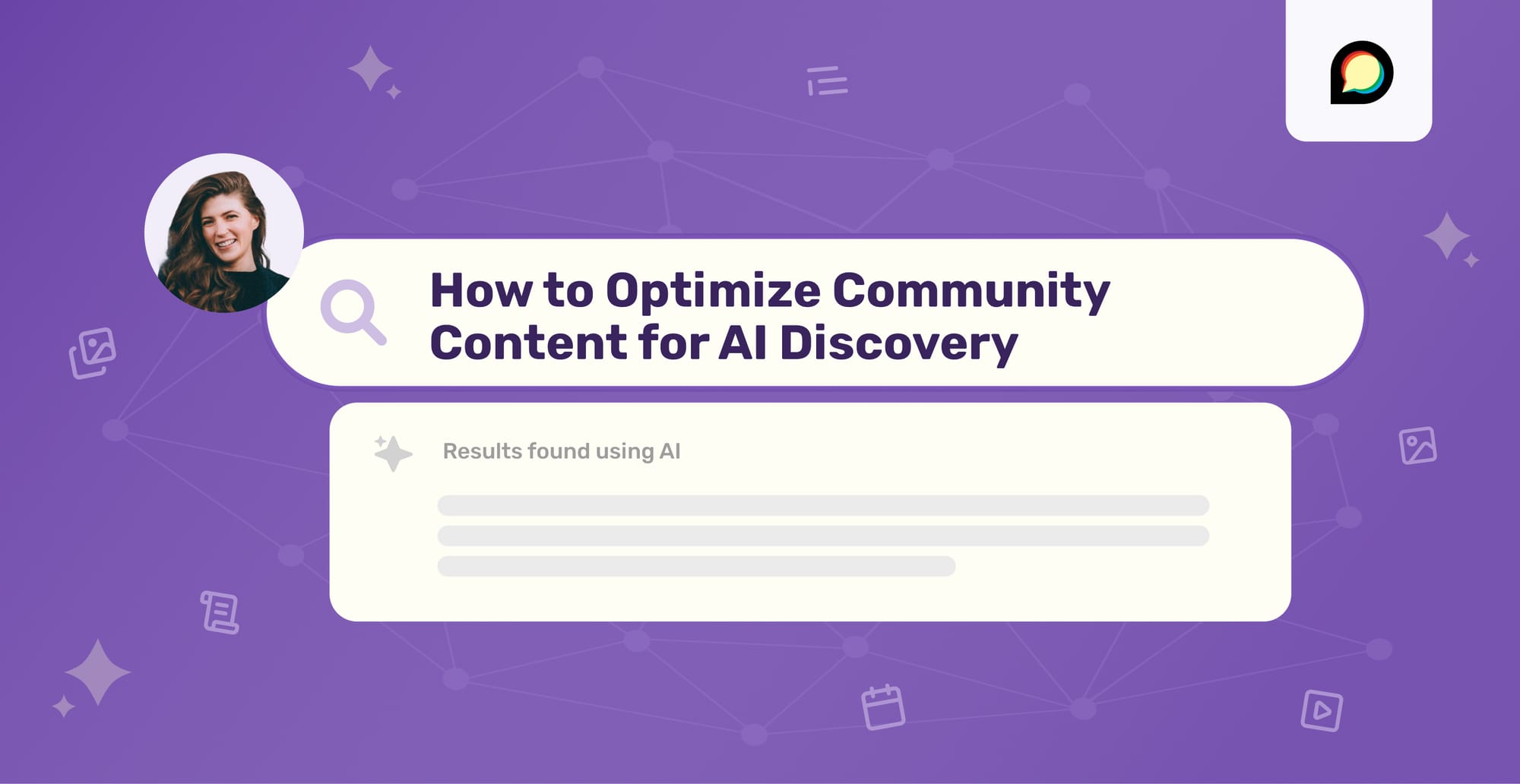
AI has turned search into answers. People ask a question, get one synthesized response, and see a small handful of cited sources. If your community is one of those sources, you win trust, traffic, and pipeline.
But how do you get there? How do you become a trusted destination for AI?
The “hack” is simple. If you optimize your content to be easy to search, easy to read and easy to follow for your community, you’re already halfway there.
How to Organize Discussions for AI Comprehension
1. Topic Structure
To effectively parse and surface community discussions, AI tools want to see a logical, well-structured format. Topics and posts should start with a clear, descriptive title, followed by a concise problem statement or question. Responses should (ideally!) stick to the topic and follow a linear, hierarchical flow and avoid fragmented replies or tangents that can confuse both AI crawlers and your community. Using proper formatting (e.g., bullet points, subheadings, or quoted replies) helps LLMs understand the relationships between questions, answers, and follow-ups, improving the visibility of the content in AI-driven search experiences.
Treat every solved thread as a mini landing page for a single problem. Make it easy to read, easy to trust, and easy to cite. Do that consistently, and your community becomes the brand asset AI can’t ignore.
Helpful Features:
- Support for heading formatting and bullet lists that make content easy to organize
- Ability to include quotes to make it clear what’s being responded to
- Move off-topic content to a new or existing topic to keep the current topic focused and clear
- Ability for members to flag off-topic content
- AI title generation
Example Community: https://meta.discourse.org/
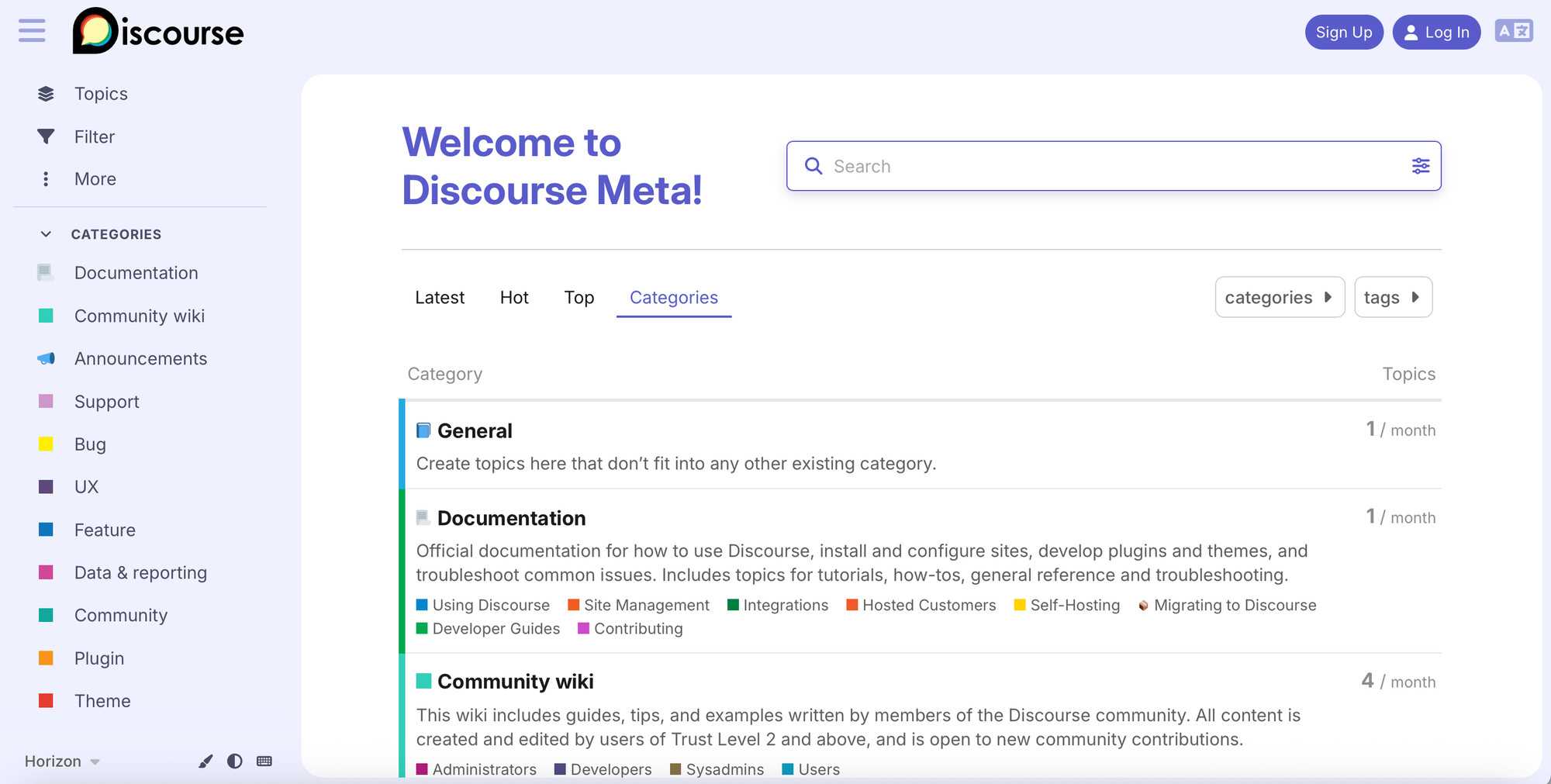
2. Topic Clustering
AI thrives on contextual relationships, which makes topic clustering a powerful strategy for content discovery. By linking related topics through internal references, curated collections, or even recommendation widgets, you provide LLMs with a richer semantic map of your community. This helps AI agents understand the broader context of individual discussions and it improves how comprehensively they can address user queries by pulling insights from thematically grouped content. It’s an effective way to turn scattered conversations into cohesive knowledge hubs.
Helpful Features:
- Categories and tags can help “cluster” content together
- Allowing members to include quotes from other topics, making it easy to move into related and/or adjacent topics
- Show the link of the original topic whenever a topic is mentioned elsewhere
- Make it easy to link to other topics (CMD+K “Insert Link)
Example Community: https://community.amazondeveloper.com/c/amazon-music/22
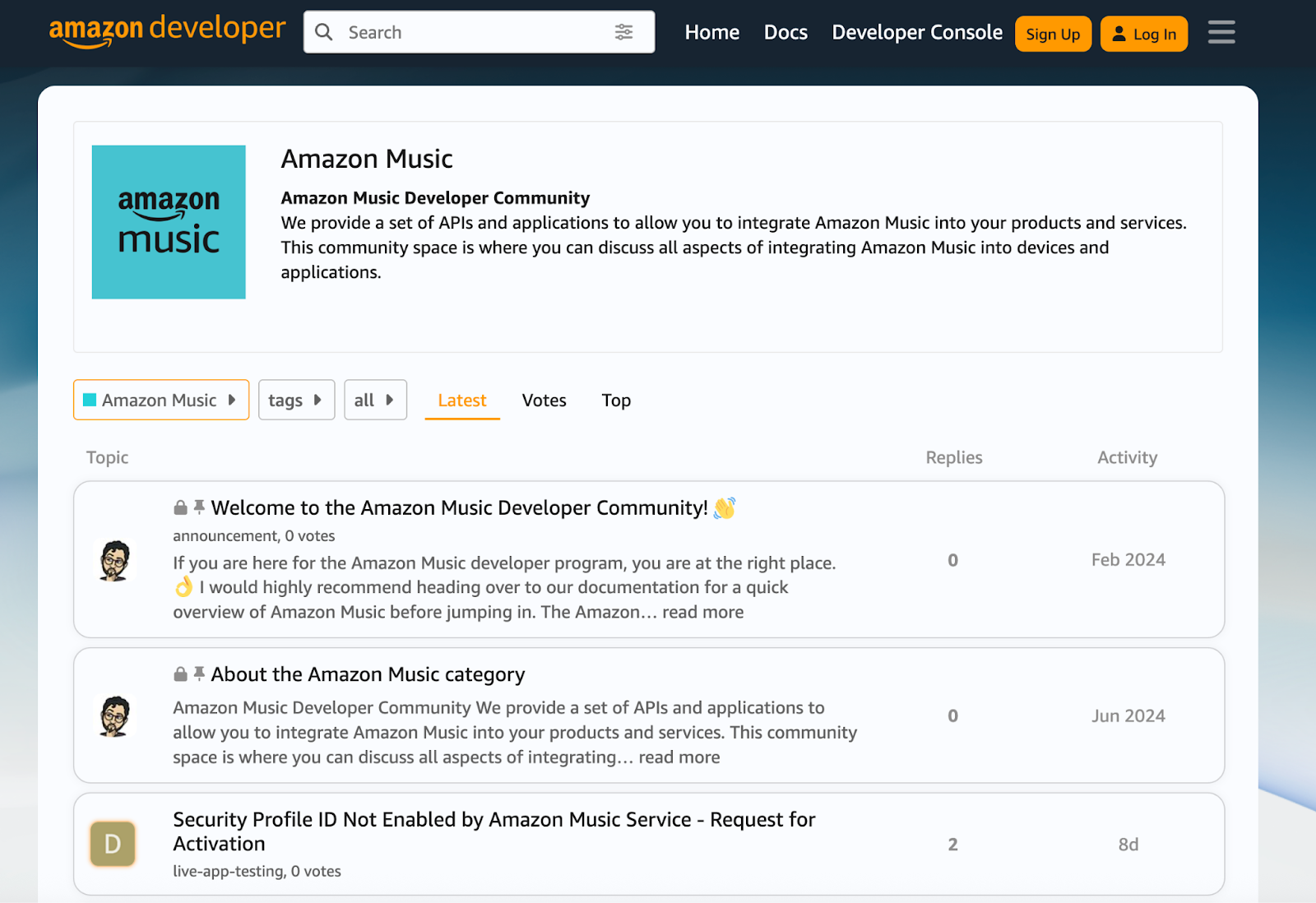
3. Clear Resolution
AI models prioritize clarity and finality when identifying valuable content, so community topics should aim to reach clear resolutions. Marking accepted answers, summarizing solutions at the end of a discussion, or tagging helpful replies helps AI distinguish between unresolved speculation and authoritative responses. Citing sources or linking to supporting documentation will always increase credibility- and signal to AI that the thread contains reliable, actionable information worth elevating in search results.
Helpful Features:
- Discourse Solved Plugin allows members to mark a reply as the solution to their problem, which is then highlighted in the original post.
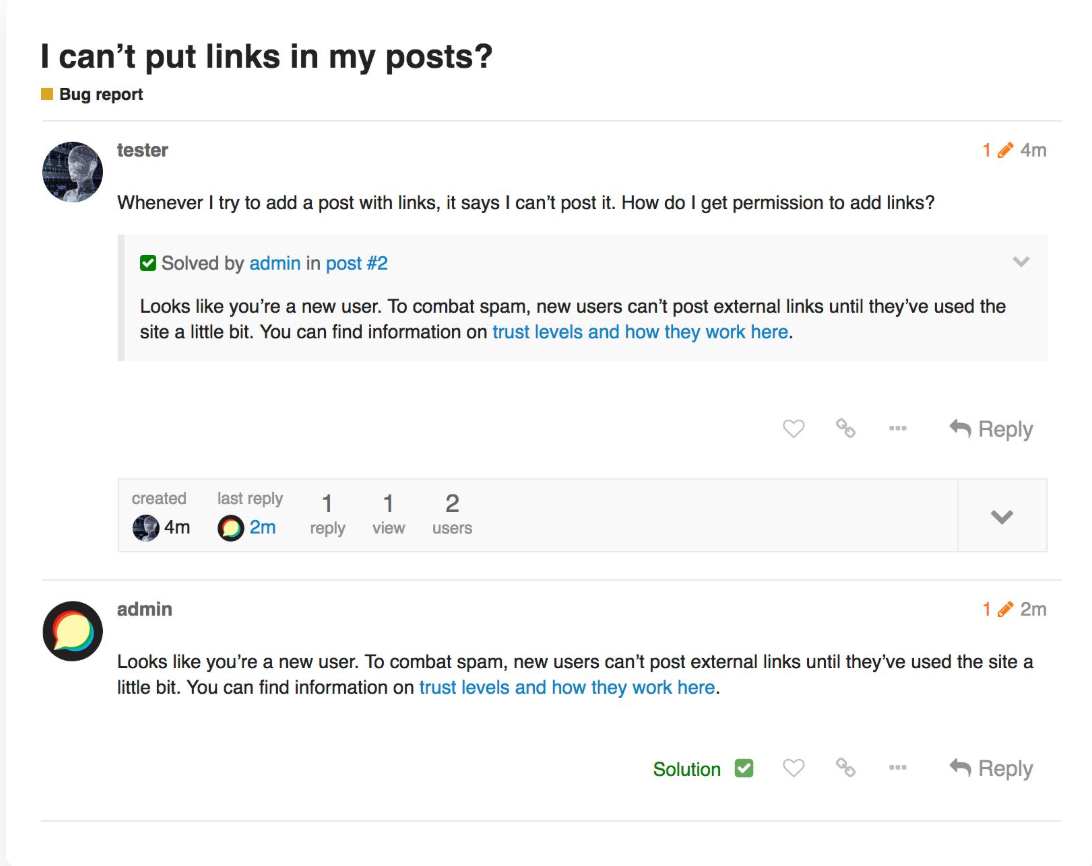
Example Community: Support and Help - Ubuntu Community Hub
4. Metadata
Accurate and descriptive metadata plays a huge role in helping AI understand the intent and content of discussions. Well-written (non-clickbait) titles that connect to the core question or theme, along with precise category placement and consistent tagging, act as cues for AI systems trying to determine content relevance. Avoid vague or overly broad labels—specific, structured metadata helps LLMs connect user queries with the most relevant topics, especially in complex or technical communities where nuance matters.
Helpful Features:
- Categories and tags
- Admins and/or moderators can easily move content around to a better topic and add tags to make it easier for others to find the topic
Example Community: ESP32 with SIMCOM A7670C GSM Module – Not receiving AT command responses - Networking, Protocols, and Devices - Arduino Forum
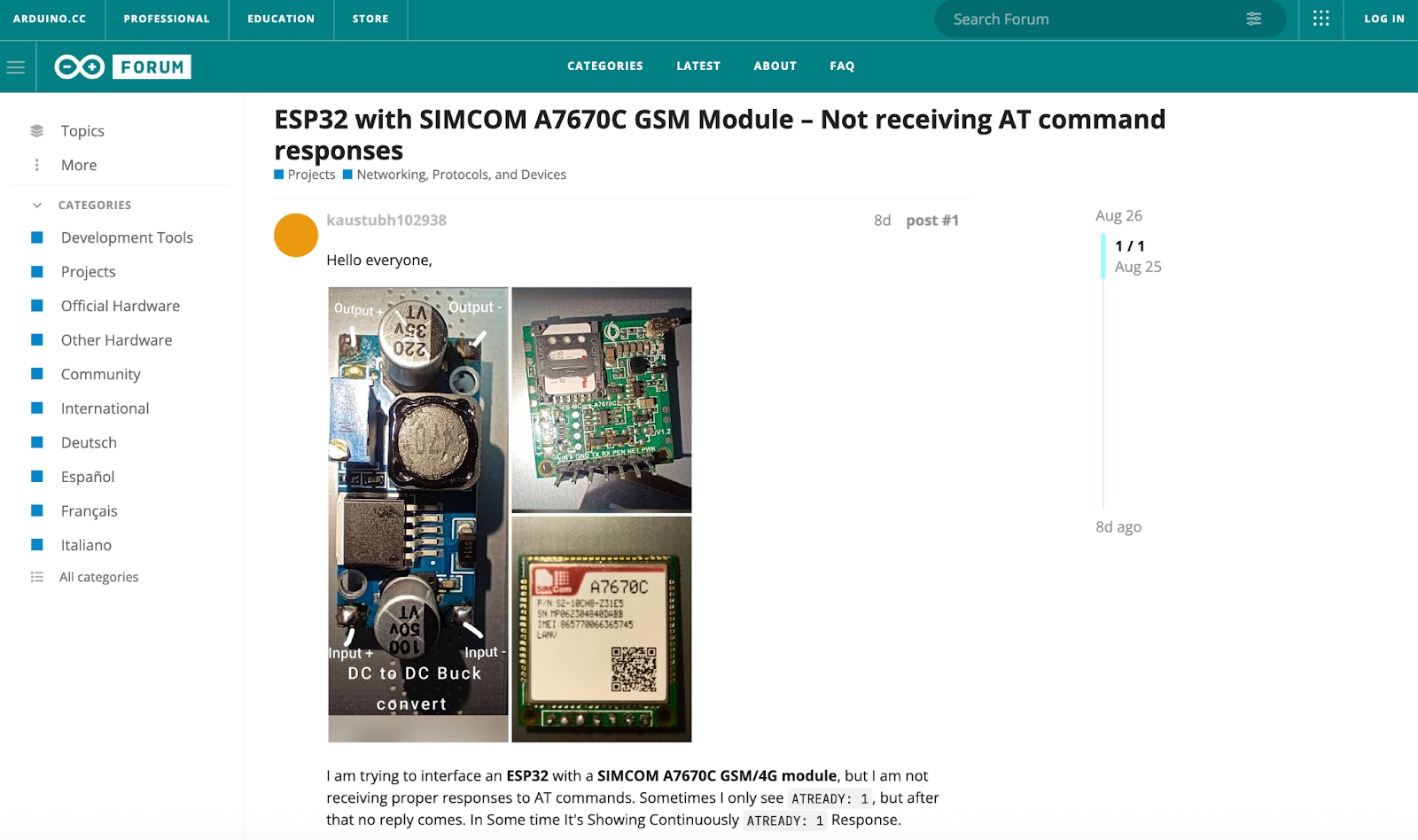
5. Expert Identification
AI systems look for signals of authority when evaluating content. Highlighting expert contributors within your community—through badges, bios, rankings and reputation scores—helps AI prioritize insights from trusted voices. When responses come from verified professionals or recognized subject matter experts, and that information is clearly surfaced, it boosts the credibility and visibility of those topics in AI-generated summaries and answers. Recognizing expertise supports better AI comprehension and builds user trust and engagement.
Helpful Features:
- Badges and leaderboards can help signify experts
- Flair can help denote “special” members, like how we have a team member flair on Meta
- Trust levels could also fit with this a little bit perhaps…might be a little too hard of a connection to make though.
Example Community: https://letstalk.mindline.sg/t/toxic-parent/26927
Technical Considerations for Community Platforms
Schema Markup:
Structured Data That Helps AI Understand Your Content
Schema markup is like speaking the native language of search engines and AI systems. It makes your content more eligible for rich snippets, featured results, and AI citations. In a world where search is becoming increasingly answer-driven, schema is a low-effort, high-impact way to make your content stand out and be understood.
Content Hierarchy:
Clear Information Architecture for AI Crawlers
AI crawlers rely on logical structure to make sense of content. When done right, this makes it easier for AI systems to extract, summarize, and reference your content accurately. Whether it's a support article or a community thread, clear architecture increases scannability, improves search performance, and enhances the likelihood of being cited in AI-generated responses.
Page Speed and Accessibility:
Technical Factors That Still Matter
AI might be reshaping search, but old-school technical performance still plays a crucial role. If your site is slow or hard to read for users with assistive technology, it’s less likely to be recommended or ranked. Optimizing for speed, accessibility, and clean code isn’t just good practice, it ensures that your content remains visible and useful across all platforms, including AI-powered interfaces.
Mobile Optimization:
Ensuring Content Works Across All Discovery Methods
Most users and AI systems interact with your content on mobile-first platforms. Whether it's a search result, chatbot, voice assistant, or embedded AI module, your content needs to render fast, clean, and legible on smaller screens. Mobile optimization isn’t just about responsive design; it’s about ensuring your value is delivered no matter the device or context.
Internal Linking:
Helping AI Understand Content Relationships
Internal links do more than keep users on your site, they signal relationships between topics, pages, and ideas. For AI crawlers, internal linking builds a map of your content ecosystem, showing how knowledge connects and where depth lives.
The Community Content Advantage
If you have an active public community, you already have a treasure chest of content that AI systems will love. Why?
- Authentic community discussions capture something manufactured content rarely does: lived experience.
When real people talk through real problems, the nuance, trade-offs, and constraints surface on their own. These posts aren’t written by a committee for brand polish or performance metrics; they come from real humans, who are poart of a real community, making them authentic, relevant, and full of authority signals. That resonates with both human readers and AI systems looking for trustworthy, experience-based answers. A polished blog post might hit keywords, but a well-trafficked forum thread is the stuff people and machines trust most.
- Communities build knowledge incrementally and collectively.
A single question can evolve into a layered, linked, multi-perspective conversation spanning weeks, months, or even years. These topics compound in value, turning into rich, evergreen resources. Every new contribution strengthens the shared knowledge base. Unlike one-off content pieces, community discussions grow in relevance and searchability over time, increasing their surface area for discovery and citation.
- Forums Create Content That's Both Human-Valuable and AI-Discoverable
Forums naturally produce content in a human-friendly and machine-readable way. Questions at the top, followed by context-rich, timestamped replies featuring links, references, and clarifications. It’s a format that mimics the ideal shape of a modern web answer - which is conversational. For humans, it’s easy to scan and understand multiple perspectives. For AI systems, it’s easy to parse and cite.
- The Sustainability Advantage: Communities That Generate Content vs. Companies That Create It
Creating content is expensive. It doesn’t happen without a team of writers, editors, designers, and promoters. And even then, it often has a short shelf life. Communities are different. They generate content as a byproduct of doing what they already do: helping each other. Peer-generated content is ongoing, contextual, and constantly updated, without the same cost or effort.
The result: a sustainable content engine that grows naturally, adapts organically, and stays relevant because it reflects what people are actually talking about today, not what was planned on last quarter’s editorial calendar.
